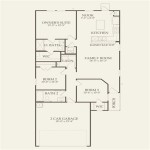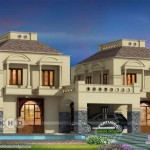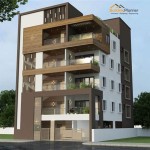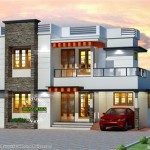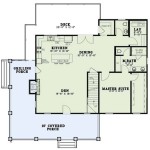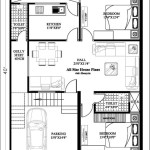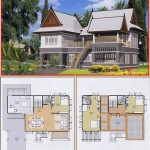Houseboat Building Plans: A Comprehensive Guide
Building a houseboat offers the unique opportunity to combine the comforts of home with the freedom of life on the water. Whether envisioning a cozy retreat or a spacious liveaboard vessel, careful planning is essential. This guide explores the critical aspects of houseboat building plans, empowering individuals to navigate the process effectively.
Key Considerations Before Starting
Several factors influence the design and functionality of a houseboat. Considering these upfront streamlines the planning process and ensures a successful outcome.
1.
Intended Use:
Define the primary purpose of the houseboat. Will it serve as a weekend getaway, a permanent residence, or a platform for recreational activities? The intended use dictates the size, layout, and features required.2.
Budget:
Establish a realistic budget early on. Houseboat construction costs can vary significantly based on size, materials, and complexity. A well-defined budget helps guide material selection and design choices.3.
Location:
The intended waterway influences design considerations. Factors such as water depth, currents, and potential weather conditions impact hull design and structural requirements. Local regulations and permitting processes also vary by location.4.
Size and Layout:
Determine the desired living space and layout. Consider the number of occupants, necessary amenities, and desired functionality. This informs the overall dimensions of the houseboat and the arrangement of interior spaces.Choosing the Right Houseboat Plans
Selecting appropriate houseboat plans is crucial for a successful build. Several options exist, catering to different skill levels and preferences. Choosing the right plan sets the foundation for the entire project.
1.
Pre-designed Plans:
Numerous pre-designed houseboat plans are available from architects and specialized companies. These plans offer a range of styles, sizes, and features, often including detailed drawings and material lists.2.
Custom Plans:
For unique requirements or specific design preferences, commissioning custom houseboat plans is an option. Naval architects or marine engineers can create bespoke designs tailored to individual needs and the intended waterway.3.
DIY Plans:
Individuals with strong design and construction skills may opt to develop their own plans. This requires a thorough understanding of boat design principles, structural engineering, and relevant regulations.4.
Kit Boats:
Kit boats offer a convenient option for those seeking a more hands-on building experience. These kits provide pre-cut materials and detailed instructions, simplifying the construction process.Essential Components of Houseboat Plans
Regardless of the chosen plan source, several essential components should be included for a comprehensive and functional design. These components are crucial for a successful build and ensure the structural integrity and livability of the houseboat.
1.
Hull Design:
The hull design is fundamental to the stability and performance of the houseboat. Plans should specify the hull type (e.g., pontoon, displacement, catamaran), dimensions, and construction materials.2.
Framing and Structure:
Detailed framing plans outline the structural framework of the houseboat, including floor joists, wall studs, and roof supports. These plans specify materials, dimensions, and connections.3.
Electrical System:
Electrical plans detail the wiring layout, including lighting, appliances, and power distribution. These plans ensure safe and efficient electrical functionality within the houseboat.4.
Plumbing System:
Plumbing plans outline the freshwater and wastewater systems, including fixtures, piping, and holding tanks. Proper plumbing is essential for comfortable and sanitary living conditions.5.
HVAC System:
Heating, ventilation, and air conditioning (HVAC) plans specify the system design and layout, including ductwork, vents, and equipment placement. This ensures a comfortable interior environment regardless of weather conditions.Building Materials and Construction Techniques
Selecting appropriate building materials and utilizing proper construction techniques is critical for the longevity and durability of the houseboat. The choice of materials impacts both the structural integrity and the aesthetic appeal of the finished vessel.
1.
Hull Materials:
Common hull materials include steel, aluminum, fiberglass, and wood. The choice depends on budget, desired performance characteristics, and maintenance requirements.2.
Framing Materials:
Wood, steel, and aluminum are common framing materials. The choice depends on structural requirements, budget, and construction preferences.3.
Flooring, Walls, and Roofing:
A variety of materials are suitable for interior finishes, including wood, vinyl, and composite materials. Consider durability, moisture resistance, and aesthetic preferences.4.
Construction Techniques:
Employing proper construction techniques is essential for a strong and durable houseboat. This includes accurate measurements, proper fastening methods, and adherence to building codes and regulations.Regulations and Permits
Navigating regulatory requirements and obtaining necessary permits is a crucial step in the houseboat building process. Compliance with local, state, and federal regulations ensures legal operation and avoids potential complications.
1.
Building Permits:
Building permits are typically required for houseboat construction. Consult local authorities to determine specific requirements and procedures.2.
Navigation Permits:
Navigation permits may be required for operating the houseboat on certain waterways. These permits regulate vessel operation and ensure compliance with safety standards.3.
Mooring Permits:
Mooring permits are necessary for securing a permanent or long-term mooring location. Availability and regulations vary by location and waterway.Safety Considerations
Prioritizing safety throughout the design and construction process is paramount. Incorporating safety features and adhering to safety guidelines ensures the well-being of occupants and protects the investment.
1.
Flotation Devices:
Adequate flotation ensures the houseboat remains buoyant even in the event of flooding or damage. Incorporate sufficient flotation devices and compartmentalization to enhance safety.2.
Fire Safety:
Install smoke detectors, fire extinguishers, and fire suppression systems to protect against fire hazards. Use fire-resistant materials where appropriate.3.
Navigation Lights and Equipment:
Equip the houseboat with proper navigation lights, horns, and safety equipment as required by regulations. This enhances visibility and ensures safe operation on the water.4.
Emergency Preparedness:
Develop an emergency preparedness plan, including procedures for evacuation, communication, and first aid. Ensure all occupants are familiar with the plan.Launching and Operation
Launching the completed houseboat and understanding basic operation procedures marks the culmination of the building process. Proper launching techniques and operational knowledge are essential for a smooth transition to life on the water.
1.
Launching Procedures:
Consult experienced professionals or utilize appropriate equipment for launching the houseboat safely and efficiently. Ensure proper weight distribution and stability during the launching process.2.
Systems Operation:
Familiarize oneself with the operation of all onboard systems, including electrical, plumbing, and navigation equipment. Proper operation ensures comfortable and safe living conditions.Careful planning, thorough research, and attention to detail are crucial for a successful houseboat building project. By understanding these key aspects, individuals can embark on the journey of creating their own unique floating home.

Custom Houseboat S And Manufacturing Floorplans

Lovely Houseboat Floor Plans 5 Suggestion House Gallery Ideas Boat Building Wood

A House Boat Plan Helps When Building Houseboat

Houseboat Floor Plans How To Maximize Space On The Water House Boat Floating

Custom Houseboat S And Manufacturing Floorplans

Houseboats

Houseboat Plans Aqua Casa Cape Codder Wooden Boat

Custom Houseboat S And Manufacturing Floorplans

Atkin Co Retreat

Odyssey Houseboat

